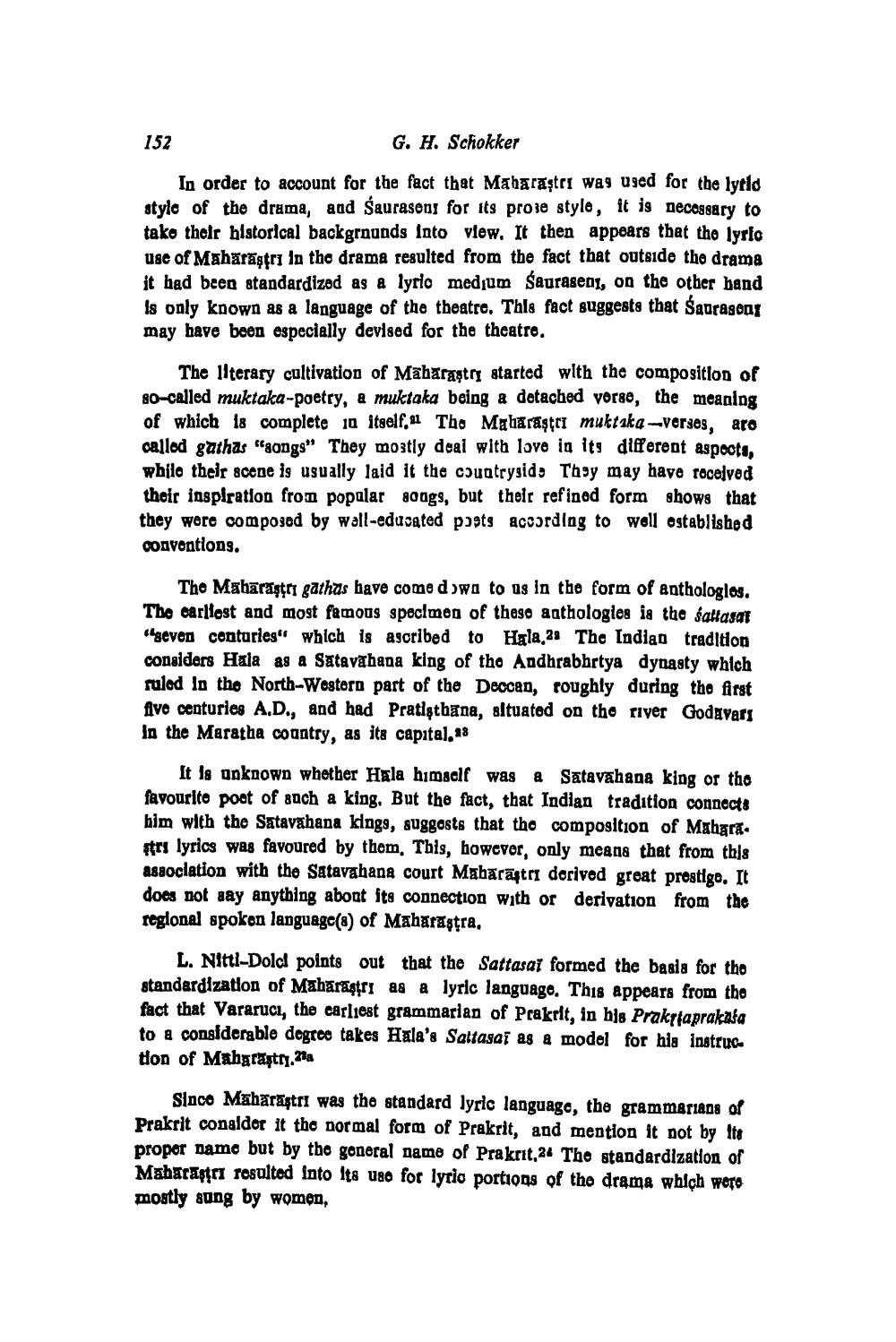________________
152
G. H. Schokker
In order to account for the fact that Mabarastro wag uged for the lytid style of the drama, and Saurasen for its prose style, it is necossary to tako their historical backgrounds Into view. It then appears that the lyric use of Maharastry in the drama resulted from the fact that outside the drama it had been standardized as a lyrlo medium Sauraseni, on the other hand Is only known as a language of the theatre. This fact suggests that Sauragons may have been especially devised for the theatro.
The literary cultivation of Maharastry started with the composition of 80-called muktaka-poetry, a muktaka being a detached vorse, the meaning of which 18 complete in itself. Tho Maharaştri muktaka --Verses, aro called gathas "gongs" They mostly deal with love in its different aspects, while their scene is usually laid it the countrysid: Thay may have rocelved their inspiration from popular songs, but their refined form shows that they were composed by wall-educated posts according to well ostablished convontions.
The Maharastri gathas have come dywa to as in the form of anthologlos. The earliest and most famous specimen of these anthologies in the saltasat "geven conturleges which is ascribed to Hyla21 The Indian tradition considers Hala as a Satavahana king of the Andhrabbrtya dynasty which ruled in the North-Western part of the Deccan, roughly during the first Ave centuries A.D., and had Pratişthana, altuated on the river Godavari In the Maratha country, as its capital. 18
It is unknown whether Hæla himself was a Satavahana king or tho favourite poot of such a king. But the fact, that Indian tradition connects him with the Satavahana kings, suggasts that tho composition of Mahara. stri lyrics was favoured by them. This, however, only means that from this association with the Satavahana court Mabarastri dorived great prostige. It does not say anything about its connection with or derivation from the regional spokon language(8) of Maharastra,
L. Nitti-Dolcl points out that the Sattasai formed the basis for tho standardization of Maharastrı as a lyric language. This appears from the fact that Vararuci, the earliest grammarlan of Prakelt, in his Prakttaprakala to a considerable degree takes Hala's Sattasai as a model for his instruc tion of Maharastry. 22a
Since Maharastri was the standard lyric language, the grammarians of Prakrit conaldor it the normal form of Prakrit, and mention it not by Its proper namo but by the general name of Prakrit,24 The standardization of Maharastri rosulted into Its uso for lyrio portions of the drama which wers mostly song by women,




